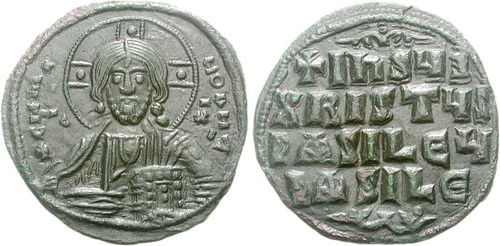
PREV ARTICLE
NEXT ARTICLE
FULL ISSUE
PREV FULL ISSUE
V25 2022 INDEX E-SYLUM ARCHIVE LOOSE CHANGE: JULY 10, 2022Here are some additional items in the media this week that may be of interest. -Editor Greg Reynolds published a nice Greysheet article on the historical impact of the first 3-cent silver pieces. See the complete article online. -Editor
Three Cent Silvers are unlike Three Cent Nickels, which were minted from 1865 to 1889. Three Cent Nickels do not contain any silver and Three Cent Silvers do not contain any nickel. Type 1 Three Cent Silvers were minted from 1851 to 1853. Type 2 Three Cent Silvers were introduced in 1854, and the third type began in 1859. The distinctions between Type 2 and Type 3 Three Cent Silvers are not as significant as the differences between Type 1 and Type 2 coins.
To read the complete article, see:
An article on the PCGS site discusses the origins of the Yuan Shikai dollar. -Editor Expelling the foreign silver coins from China, the Yuan Shikai Dollar became a turning point for Chinese coins. During the late Qing Dynasty in China, the foreign currency inside the nation caused havoc. The government of the Qing Dynasty had lost both control and autonomy over the circulating coinage in China with more than 100 different circulating Chinese and foreign currencies in circulation in the country. With this system of exchange, it caused issues with both fixed exchange and taxation, leaving the general public exasperated with the system. In 1914, the National Currency Regulations were put into effect to produce a new currency on the silver standard. President Yuan Shikai saw this opportunity to place his portrait on this new currency to solidify and propagate himself and his political status by means of this new currency. For the design of Yuan Shikai, the Italian engraver L. Giorgi was employed to model the obverse. From photographs, Giorgi designed a coin featuring a portrait-facing 70% from view. After struck patterns of the coin were produced, Giorgi made the trip to Beijing to meet the president. After meeting President Yuan Shikai, Giorgi found his work not true to the spirt of the president, causing him to do a full redesign of his image to that of a profile of the much larger man he had met. This design gave birth to the circulation-issue Yuan Shikai Dollar that would propagate China until 1951.
To read the complete article, see:
A CoinWeek article by Michael Shutterly discusses the anonymous folles of Byzantium. -Editor Imperial Byzantine coinage served both economic and propaganda purposes. The coins routinely identified the reigning emperor or empress by name and title, and usually portrayed the ruler in some vigorous pose that demonstrated power and authority.
One great exception was the copper coinage that began to appear circa 969 and endured until circa 1092. The
Anonymous Folles continued to appear alongside
To read the complete article, see:
Bibliophiles, especially those of a certain age, will enjoy this essay on the late lamented physical card catalog. -Editor
The Library of Congress still holds its entire (paper) card catalog, which is currently gathering dust in the basement, essentially a relic abandoned by modern society. Supposedly, they keep it there for older patrons who occasionally use it, but the catalog remains an important historical archive. The more modern system that was used in libraries up until about the end of the 2000s, started with a catalog of cards to manage the personal book collection of Francis Ronalds, a 19th century English scientist and inventor, who pioneered the first practical use of this system. The mid 1800s saw the Italian publisher, Natale Battezzati develop a similar card system for booksellers wherein cards represented authors, titles, and subjects. To come full circle, the internet now has websites that offer ways to Re-use a Card Catalog. On Amazon, you can purchase a reproduction of a nostalgic library box tray, complete with 30 notecards and tabbed dividers. The aptly-named brand, Out of Print, has an entire Library collection including tote bags, socks and drink sleeves inspired by the card catalog to express your love of the stacks.
To read the complete article, see:
Wayne Homren, Editor The Numismatic Bibliomania Society is a non-profit organization promoting numismatic literature. See our web site at coinbooks.org. To submit items for publication in The E-Sylum, write to the Editor at this address: whomren@gmail.com To subscribe go to: https://my.binhost.com/lists/listinfo/esylum All Rights Reserved. NBS Home Page Contact the NBS webmaster 
|




